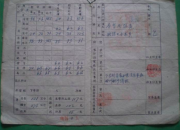英语说课稿
时间:2021-08-31篇一:英语说课稿格式
英语说课稿格式
今天我说课的内容是义务教育课程标准实验教科书, 英语 的第 单元第 课时。
1. 说教材
⑴教材内容 A本课时的教学内容为 B需要掌握的词汇有 C需要掌握的句型有
⑵地位和作用 本课是第 单元的第 课时,教材中出现
了 的用法,本课时又是第 单元的重点,因此本课时的教学对第 单元的学习起着关键的作用。
2. 说目标
⑴教学目标 根据新课程理念教材内容,教学要求,我制定以下教学目标:
知识目标:能听懂,会说,会读,会拼写本课时主要词汇: 以及句型;
能力目标:能用本课时所学句型: 就日常生活中的话题进行交流,使学生掌握 的用法;
情感目标:引导学生
总思路:
⑵重点和难点
本课时的重点使要求学生掌握词汇 以及句型 ,本课时的难点是:
3.说教法(本课是 学生情况 )
⑴教法分析(创设情境,事物展示,活动 )
英语教学的目的在于让学生获得用英语焦急的能力,所以在课堂教学活动中需创设特定的情景,使学生通过模仿和想象,促进学生的理解和记忆,启发学生思维达到教学目的。
⑵学法指导
要让全班学生都参与到课堂活动中来,同桌之间的合作,尤为重要,可使同学们都敢于在课堂中操练口语,更可使学生们不会有被忽视的感觉,合作简单,增多操练机会。
⑶教学手段
充分利用多媒体,投影仪,录音机等教学手段,为学生创设英语学习的环境增加学生的学习兴趣。
4.教学过程
为了完成以上教学任务,我设计了一下教学过程:
Step1:Warming up
⑴It’s time for English class.Let’s ;
⑵创设轻松的氛围,带领学生进入英语学习的;
⑶复习动词Let’s do 通过“你说我做”的TPR活动在复习旧知的同时,为新课做好铺垫,因为学生都熟悉这些动作,建议教师让学生当小老师来发指令,这样可以充分体现学生的主动性。
Step2:Free talk
⑴提问 ⑵Game
本课学习的重点是 教学手段 巩固 的掌握,为导入新课作准备。
Step3:Presentation
⑴单词新授 通过事物或图片教学单词,学生能更好的理解和掌握单词;
⑵单词复习 互问互答 让学生通过对句子的操练巩固语言知识,拓宽学生的视野和增添学习兴趣;
⑶句子新授
⑷巩固新句型,快速抢答,互问互答
A 在紧张激烈的比赛中,大量输入 降低学习的难度,使学生学习的积极性更加高涨(讲情规则);
B 生活情景展示 通过多媒体等方式把语言知识放在特定的情景中进行操练,体现语言运用的真实性;
⑸播放录音 学生观看相关的动作画面,跟着录音听,说,演,做,在轻松自然的状态下巩固所学语言。
Step4 Practice and consolidation
同桌互助合作,体现了以语言为载体和以真实情景交际为目的的小学英语教学的基本要求。
Step5 Homework
A 听录音 巩固所学词汇和句型 B 运用句型
板书设计
篇二:英语说课稿范文
英语说课稿范文
一、Introduction(导言)
英语说课是英语教学中的重要一环,也是衡量一位英语教师对教材的把握、分析及教师本人对上课进程的宏观控制能力的有力手段,能从理论上指导教师贯彻教学大纲,真正做到教与学相结合,将教材、大纲、教师、学生、课堂融为有机整体,对不断提高教师教学能力和教研能力,有着突出的作用。
二、说课的基本原则
1. 遵循教学大纲要求,明确说课内容。把握说课与上课的区别与联系,正确理解教材、教案说课、上课之间的层进关系,走出说课即是“说教案”的误区。
2. 以教师为主导,学生为主体,体现先进的教学理念。
3. 详略得当,重点突出,体现说课的完整性。
4. 与教案相结合,体现其可操作性。
三、说课的基本程序
1. 说教材:科学分析教材,明确重点难点、教学目标和要求以及教材在单元中的地位和作用。
2. 说学生:谈谈学生的知识与能力结构,明确说课内容的难易程度。
3. 说教法:谈谈本节课要实施的教学手段、方法以及教具的使用。
4. 说学法:谈谈学习方法的运用以及将要实现的目标。
5. 说教学程序:说为什么要设计该程序?目的、意图何在?结果如何?
6. 说板书设计:谈谈板书设计的根据和理由,力求体现说板书设计的程序性、概括性和艺术性。
四、注重说课信息和反馈与总结
说课的对象可以是专家、同行甚至是学生。向说课对象征询意见、获取信息,力求不断改进和提高。
五、附SB 2B U16 Lesson 63说课稿
Unit 16 Lesson 63
Hello, everyone. Today I’m very pleased to have an opportunity to talk about some of my teaching ideas. My topic is life in the oceans taken from Lesson 63 of Unit 16 in SEFC(2). It is made up of four parts.
Part 1 My understanding of this lesson
The analysis of the teaching material:
This lesson is a reading passage. It plays a very important part in the English teaching of this unit. Lesson 62 and Lesson 63 are a whole unit. By studying Lesson 63, Ss can improve their reading ability, learn more about the sea and the life in the oceans. At the same time, we should get the students to understand some difficult sentences to comprehend the passage better. The Ss should do some listening, speaking and writing, too. Of course, the Ss should receive some moral education. Let the Ss understand the sea better, love the sea and save the sea and the life of the sea.
Teaching aims:
1. Knowledge aim: Understand the main idea of the text.
2. Ability aim: Retell the text in their own words.
3. Emotional aim: Make the Ss love the life of the sea and do
something to stop it being polluted.
Key points / Teaching important points:
How to understand the text better.
Teaching difficult points:
1. Use your own words to retell the text.
2. Discuss the pollution of the sea and how to save the sea.
Something about the Ss:
1. The Ss have known something about the sea and sea life through the Internet and other ways.
2. They are lack of vocabulary.
3. They don’t often use English to express themselves and
communicate with others.
4. Some Ss are not active in the class because they are afraid of making mistakes.
Part 2 My teaching theories, methods and aids
Before dealing with this lesson, I’ll do my best to carry out the
following theories: Make the Ss the real masters in class while the
teacher himself acts as director; Combine the language structures with the language functions; Let the students receive some moral education while they are learning the English language.
Teaching method:
Double activities teaching method
Question-and-answer activity teaching method
Watch-and-listen activity
Free discussion method
Pair work or individual work method
Teaching aids:
1. a projector
2. a tape recorder
3. multimedia
4. the blackboard
Part 3. Teaching steps / procedures
I have designed the following steps to train their ability of listening, speaking, reading and writing, especially reading ability.
The entire steps are:
Greetings, Revision, Lead-in and preparation for reading, Fast
reading(scanning), Listening, Intensive reading, Preparation for details of the text, Consolidation, Discussion, Homework
Step 1 Greetings
Greet the whole class as usual.
Step 2. Revision
1. Ask students some questions to revise the last lesson(show them on the screen).
a. How much salt do the oceans contain per thousand parts of water?(35 parts of salt. 3.5% by weight)
b. What is coral? Why are corals not found in deep water?
c. Why is the Dead Sea called the Dead Sea?
2. Check the homework(made a survey about the sea or sea life by surfing the Internet or asking for help from other people). Through this part we can consolidate what they studied yesterday, communicate with others about their survery results and prepare for the new lesson.
Step 3. Lead-in and preparation for reading
Show them some pictures and let them talk each other, and then use the pictures about sea and life in the oceans to learn new words, for example, Antarctica, huge whale, sperm whale, squid and so on.
Purpose: Arouse the students’ interest of study.
Bring in new subject: Life in the oceans.
Step 4. Fast reading
Read the passage as quickly as they can. I show the questions on the screen and let them get the main idea of each paragraph:
1. Why can living things live in such oceans around the Antarctica?
2. What does the whale feed on?
3. What is the difference between the sperm whale and other whales?
Method: Read the text individually, use question—and—answer
activity.
Purpose: Improve the students’ reading ability.
Understand the general idea of each paragraph.
Step 5. Listening(book closed)
1. Listen to the tape then do an exercise(wb page 90, part 1)
2. True or false exercise.(on the screen)
Train the Ss’ listening ability and prepare for later exercises.
Step 6. Intensive reading
Read the passage carefully again and answer some detailed
questions on the screen.
1. How much does a whale eat at a time?
2. Do all the whales feed on small fish?
3. How deep can a sperm whale dive?
It is also called depth reading or study reading. It means reading for detailed information.
Purpose: Further understand the text (Train further reading ability) to find out some different sentences and details of the text.
Step 7. Preparation for details of the text on the screen
1. ...its heart slows to half its normal speed.
slow-v. to become / make slower.
2. ...using sound wave
Present participle used as adverbial.
3. provide sth. for sb.
provide sb. with sth.
4. at a time: each time
5. grow to a length of...
Purpose: Train the Ss’ ability of understanding and using laguage. Step 8. Consolidation
1. Find out the topic sentences.
2. Retell the passage according to the topic sentences.
Purpose: I want to know if my students understand the whole text really and if they master what I mean to tell them in this class. What’s more, I want to let them have the ability of introducing and analyzing
expression. At the same time, I will write down the topic sentences on the blackboard according to what the students find, so they can retell it easily.
Step 9. Discussion
Show them some pictures about the polluted sea and many living
things which are in danger and ask them: What are their opinions about it? In order to let them have free choice, I give them another topic: The sea is being polluted. What should they do?
Purpose: I mean to give them emotional education. I give them
multi-media pictures to arouse their interest of study and their love for life. I mean to make them realize: The sea is in danger!
I teach them to do their best to help it and do something from now on. Everyone should do something to love and protect our home.
Step 10. Homework
Write an article Saving the sea. I want to improve the ability of their writing. At the same time, train the ability of do-it-yourself and looking up the information by themseleves.
Part 4. Blackboard design
Unit 16 Lesson 63
Topic Sentences:
1. Some living things can live in Antarctica.(what)
2. The whale feeds on small fish.(what)
3. The sperm whale feeds on squid.(difference)
Discussion:
1. The whales are in danger. What’s your opinion about it?
2. The sea is being polluted. What should we do?
In my opinion, the blackboard design can reflect the teacher’s ability of mastering the text and leading the students to master the text easily.
In this text, the design is not easy to write. I write the topic sentences on the blackboard in order to tell the students that this is of the
importance in this class. The discussion is of the difficulty.
I want to make the design inductive, instructive and artistic.











